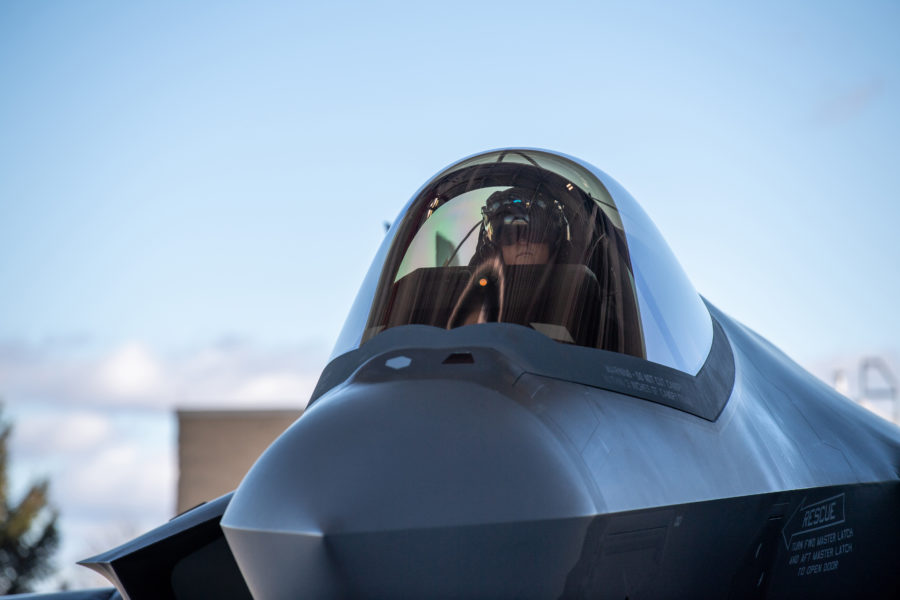The F-35’s operational success outweighs its readiness and sustainment challenges, it is making progress against those issues, and it is too strategically important not to keep funding, House Armed Services committee member Rep. Anthony Brown (D-Maryland) said at a defense conference.
Speaking at the McAleese FY2022 Defense Programs Conference on May 12, Brown explained that he signed a letter from 132 House lawmakers to the body’s leadership urging full F-35 support because “it’s performing well” in “executing … real-world missions.”
The April 28 letter by the leaders of the Joint Strike Fighter Caucus urged the House leadership to support whatever request the services submit for buying F-35s in fiscal 2022 as well as any that appear on their “unfunded requirements” lists. The letter was prompted by recent comments from House subcommittee leaders Reps. John Garamendi (D-California) and Donald Norcross (D-New Jersey) that they would oppose adding any F-35s to service requests this year in order to let the sustainment system catch up to the aircraft already in service. Sustainment rates on the F-35 have been the biggest of several sticking points in the program.
The F-35 is “the most expensive procurement, and likely the most expensive sustainment program in the history of the department, there’s no doubt about it,” Brown said. He has concerns about delays to full-rate production and whether this will call into question “whether the technology is still leading and ahead of our adversaries.”
He also noted “challenges” with software, simulators, and integrating the F-35 in the Joint Simulation Environment, as well as chronic issues relating to the Autonomic Logistics Information System and “setting up the government-operated and maintained depots.”
However, the F-35 is “a capability that we dramatically need, certainly as we’re pivoting to the Indo-Pacific,” and it is complementary to other needs in that theater, notably “other fighters, and the bomber fleet, [and] the refueling fleet.” He called it “integral to air dominance” and urged that Congress “continue the investment. We are making progress. There is frustration around the pace of progress, but we are going to get there.”
Brown is a Harvard-educated, 25-year veteran of the Army, in which he served as an aviator and a lawyer. His 4th district in Maryland is adjacent to the 8th district, home to the corporate headquarters of Lockheed Martin, which makes the F-35.
In an April 22 hearing on the F-35, Garamendi said he would put up “one hell of a fight” if fellow lawmakers urged adding unrequested F-35s to the fiscal 2022 budget. Garamendi said that the sustainment enterprise for the fighter was built around an expectation of a certain number of aircraft, and that steady congressional adds have contributed to sustainment woes by making it impossible for the enterprise to meet the demand imposed by the greater number of aircraft.
The letter also urged the leadership to support increases in F-35 sustainment accounts, saying that current predictions indicate the depots “may only be able to meet 42 percent of the required repair capacity.”
In fiscal 2021, the Air Force, Navy, and Marine Corps requested 79 F-35s, collectively, but Congress added an additional 17 aircraft to the overall buy. The Air Force has indicated it would like to buy just 48 F-35s a year and buy the bulk of its fleet of the Block 4 configuration, which will be more capable, particularly in the kinds of weapons it carries and in its electronic warfare suite.
